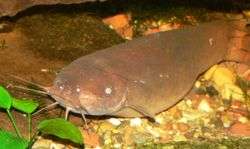Bioelectrogenesis

Bioelectrogenesis is the generation of electricity by living organisms, a phenomenon that belongs to the science of electrophysiology. The nerve impulse is a bioelectric event.[1] In biological cells, the Sodium-Potassium Exchanger maintains a voltage imbalance, or cell potential difference, between the inside of the cell and its surroundings (see also ion channel). Also called a pump, the exchanger is said to be "electrogenic", because it removes three sodium ions for every two ions of potassium it allows in. The process consumes metabolic energy in the form of ATP.[2] Plant cells also exhibit light-induced electrogenesis.[3] Certain types of bacteria are able to generate electric currents; these are used in microbial fuel cells and educational kits are available for students and hobbyists.[4]
The term usually refers to the electricity-generating ability in some aquatic creatures, such as the electric eel, electric catfish, and to a lesser extent the black ghost knifefish. Fish exhibiting such bioelectrogenesis often also possess electroreceptive abilities (which are more widespread) as part of an integrated electric system.[5] Electrogenesis may be utilized for electrolocation, self-defense, electrocommunication and sometimes the stunning of prey.[6]
See also
References
- ↑ Schoffeniels, E. D.; Mărgineanu, G. (1990). Molecular Basis and Thermodynamics of Bioelectrogenesis. Topics in molecular organization and engineering. 5. Springer. p. 20. ISBN 978-0-7923-0975-8.
- ↑ Nicholls, John G.; Martin, A. Robert; Fuchs, Paul A.; Brown, David A.; Diamond, Mathew E.; Weisblat, David A. (2012). From Neuron to Brain. 5. Sinauer. p. 145. ISBN 978-0-87893-609-0.
- ↑ Volkov, A. G. (2006). Plant electrophysiology: theory and methods. Springer. ISBN 978-3-540-32717-2.
- ↑ MudWatt Science Kit
- ↑ Bullock, T. H.; Hopkins, C. D.; Ropper, A. N.; Fay, R. R. (2005). From Electrogenesis to Electroreception: An Overview. Springer. ISBN 978-0-387-23192-1.
- ↑ Castello, M. E.; A. Rodriguez-Cattaneo; P. A. Aguilera; L. Iribarne; A. C. Pereira & A. A. Caputi (2009). "Waveform generation in the weakly electric fish Gymnotus coropinae (Hoedeman): the electric organ and the electric organ discharge". Journal of Experimental Biology. 212 (9): 1351–1364. doi:10.1242/jeb.022566.

